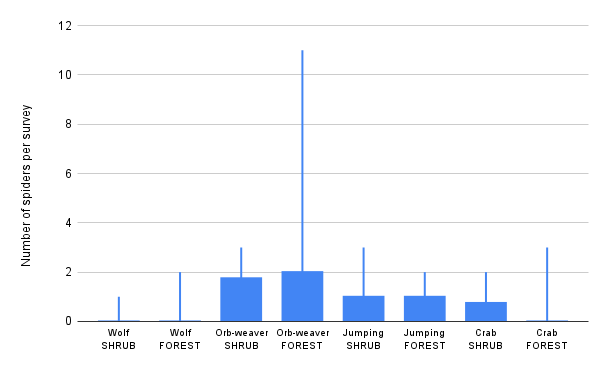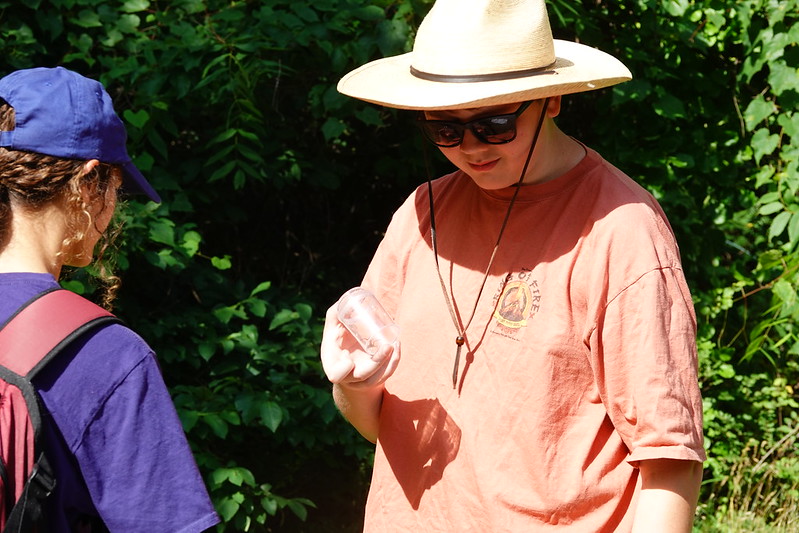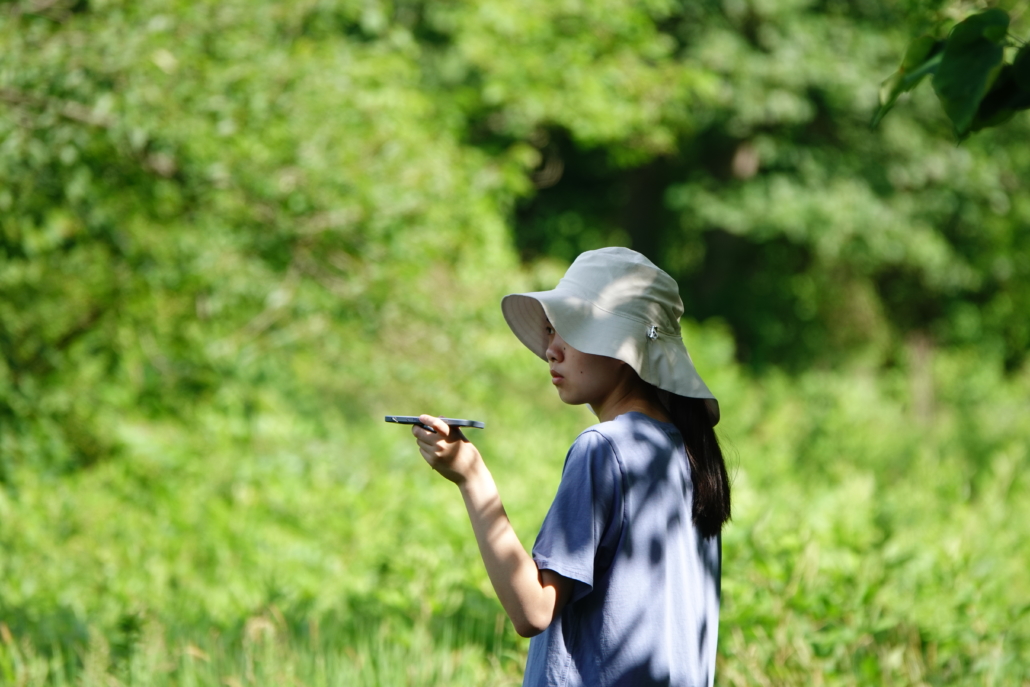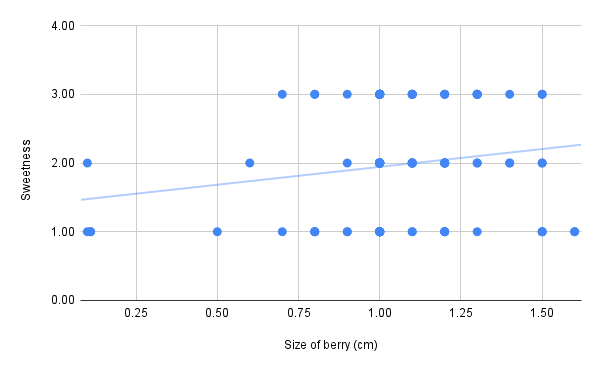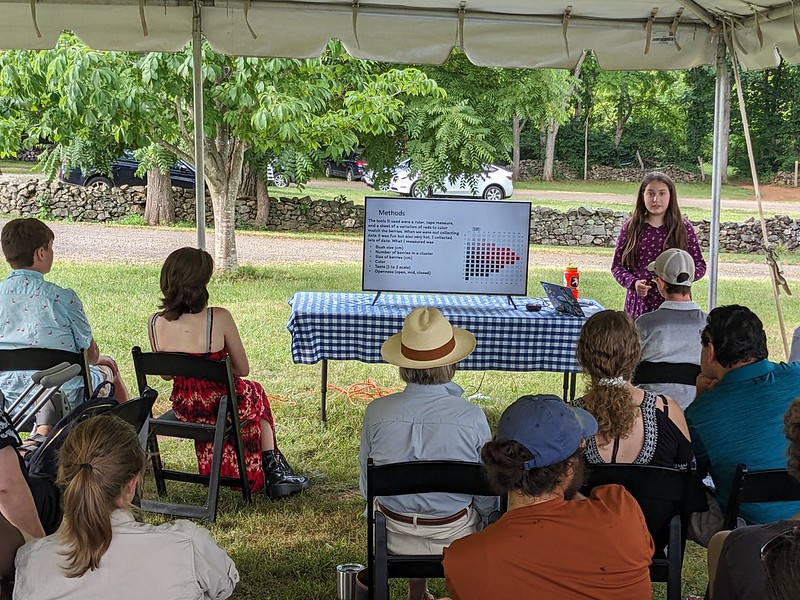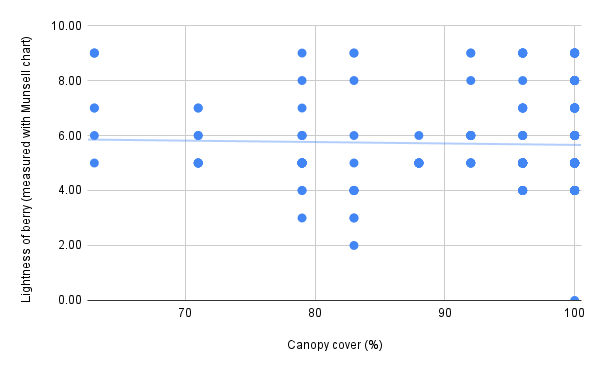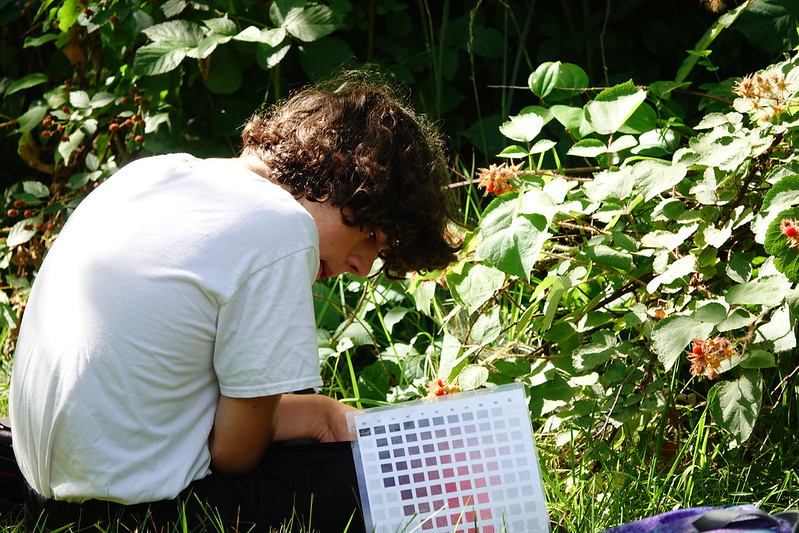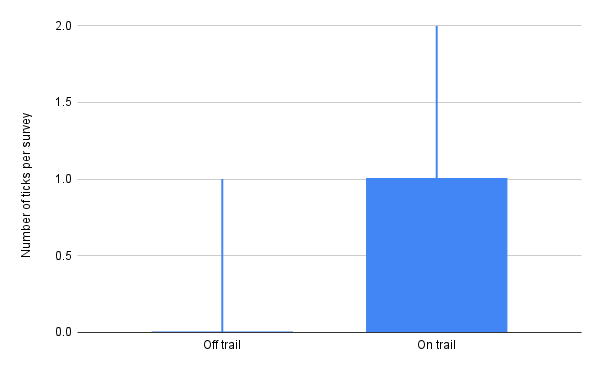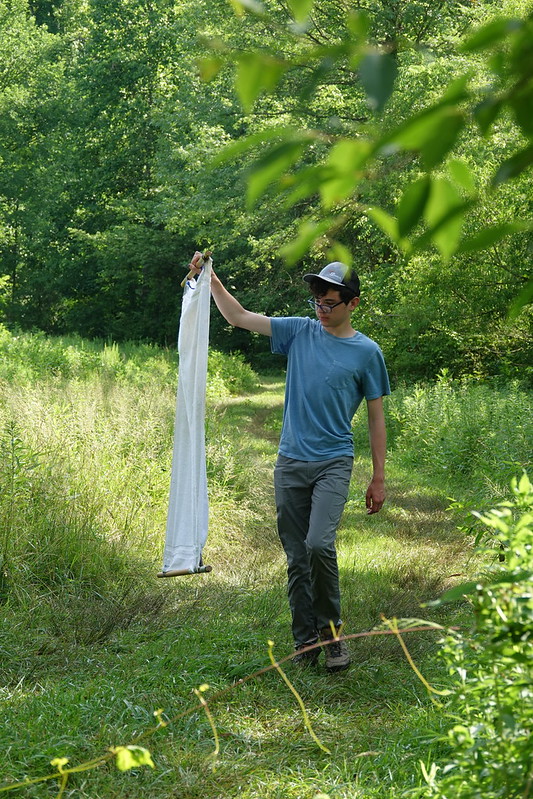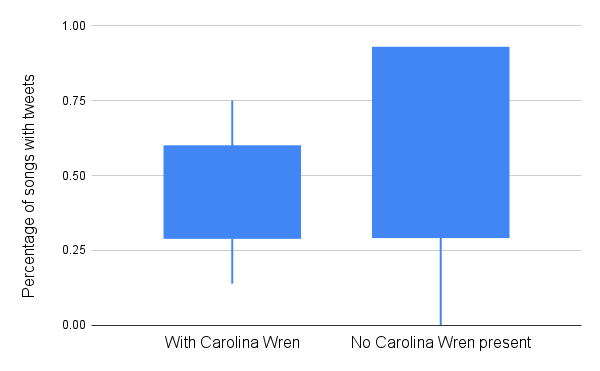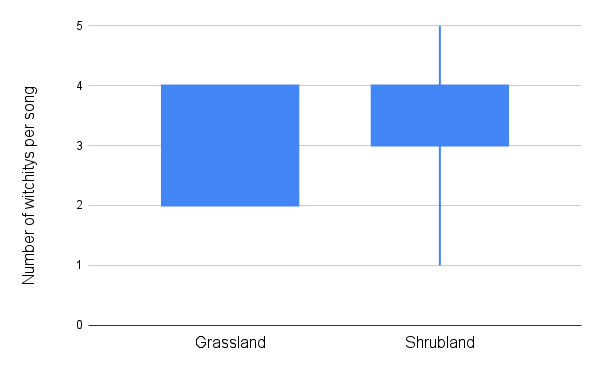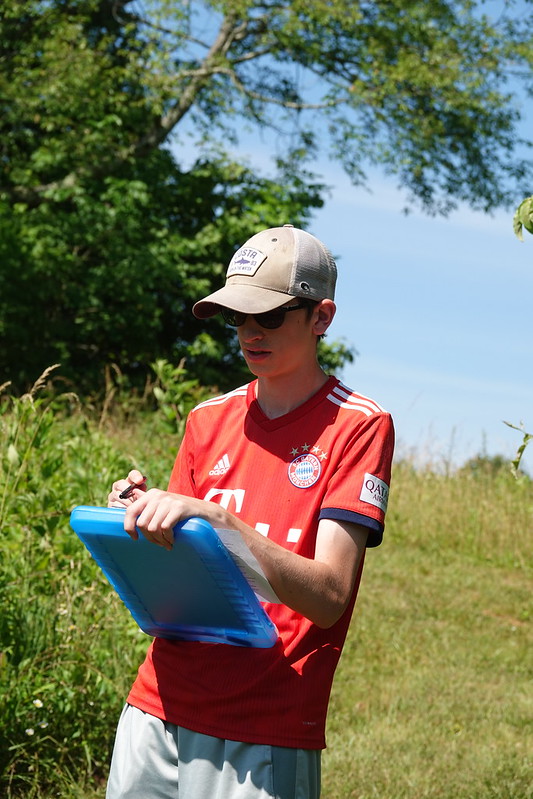Our Young Scientists Research Experience is one of our favorite programs of the year! Middle and high school students spend a week with us doing their own independent research projects. They come up with a research question, collect data to answer their questions, and share their findings during a presentation to friends and family.
We’re incredibly proud of the work these students did, and we’re excited to share their results with you!
If you’d like to sign up for next year’s Young Scientist Research Experience, you can subscribe to our email newsletter to be notified when registration opens.
Here’s a quick summary of all their hard work:
Alistair surveyed spiders in different habitats using a sweep net. He found that orb-weavers were more abundant than wolf spiders, jumping spiders, or crab spiders and, while there was one survey in a forest where he founds lots of orb-weavers, in general there were roughly the same number of spiders in forested and open habitats.
Amber was interested in studying whether birds mob more aggressively when they hear actual predator calls or the alarm calls of other birds. She did ten-minute counts to survey what birds were singing in the area and then counted the number of species in ten-minute counts after playing various predator and alarm calls. Amber found that birds tended to shut up after Barred Owl or Red-eyed Vireo calls were played, but the calls of Cooper’s Hawks and Carolina Chickadees drew more birds in. She hypothesized that birds were more afraid of Cooper’s Hawks than Barred Owls, so they mob more aggressively. Her results about Carolina Chickadees confirms previous research that this species seems to particularly good at eliciting mobbing behavior.
Claire was interested in what affects how quickly wineberries ripen. She measured the size of wineberry bushes, counted the number of berries in a cluster, and recorded what kind of habitat the bushes were in. Claire found that the best determinant for how sweet a berry is (on a scale of 1 to 3) is how large the berry is.
Declan was also interested in how wineberries ripen. He measured the amount of sunlight reaching different wineberry bushes and found that berries getting less sunlight tend to ripen slightly more quickly. While this may sound counterintuitive, it agrees with previous research about wineberry’s preference for shade.
As someone who spends a lot of time outside, Lane was interested in understanding where ticks are most abundant. He rigged up a weighted towel system to drag through various habitats to survey ticks. By the end of the week he had found more ticks on himself than on the towel, but the surveys still allowed him to conclude that it was easier to find ticks on trails compared to off trails. Perhaps this is because animals use trails and drop ticks there; it may also be because the towel was challenging to get through thick vegetation off trails.
Loreli followed up on her study last year of the abundance of salamander larvae in different ponds: she had previously found that different ponds had vastly different acidity levels. This year she conducted an experiment to see if that could be explained by the species of trees around the ponds: she collected live and dead leaves from different tree species and let them brew in 60 mL of water. While the “leaf teas” had a wide variety of pH levels, they did not seem to correlate with the pH of the ponds around which the different trees were found. Loreli did find a greater diversity of animal life in ponds with more acidic water.
After hearing differences between the Common Yellowthroat songs here at Clifton compared to his home in Fredericksburg, Nevin decided to study Common Yellowthroat dialects. He spent the week recording and carefully listening to Yellowthroats all across the property and found a wide variety of song types. The biggest challenge was figuring out how to quantify the variation in songs, which Nevin ultimately did by counting how many songs had “tweets” at the end and by counting how many “witchitys” each song had. He found that Yellowthroats that were singing in the same places as Carolina Wrens were less likely to end their songs with a tweet, perhaps to better distinguish themselves from the similar wren songs, and that Yellowthroats singing in shrublands sang more “witchitys” than those singing in grasslands, perhaps to improve how far their songs could travel in denser habitat.

